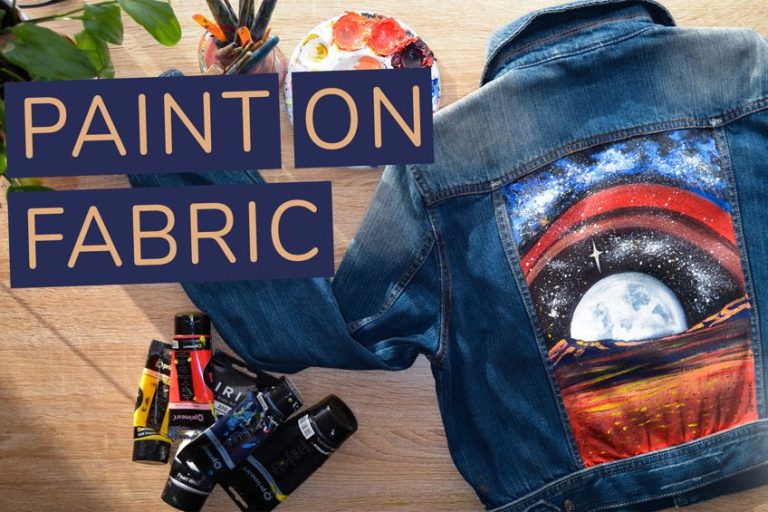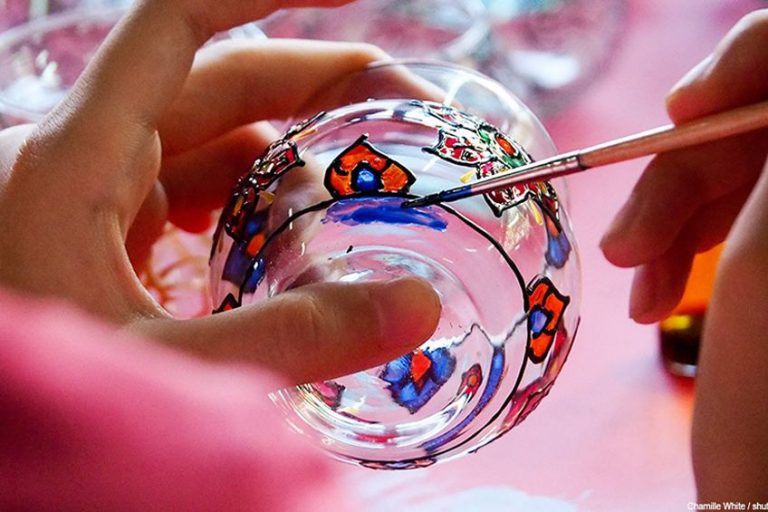Best Gouache Paint – A Guide to Finding the Best Gouache Paint Set
A water-based paint that is second-to-none in terms of ease-of-use, gouache paint is a popular paint for beginners and pros alike. The only thing about gouache paint that is more difficult than pronouncing its name, however, is finding the right paint that reaches a happy balance between affordability and quality. Keen on learning more? This article will give you a comprehensive overview of what you can expect from this type of paint and how to use it, as well as some reviews of the best gouache paint that is available for purchase.
What Is Gouache Paint?
Gouache is a popular type of water-based paint that contains more pigment than watercolor paint. Because of this, it has an opaque finish. What this means is that, unlike watercolor paint, once it has dried you are unable to see the paper underneath the paint.
The vibrant finish created by these paints resembles acrylics except for the fact that they are matte rather than shiny. Other differences between gouache paint and acrylic paint are that gouache dries faster than acrylics, and they also contain synthetic additives that make them waterproof.
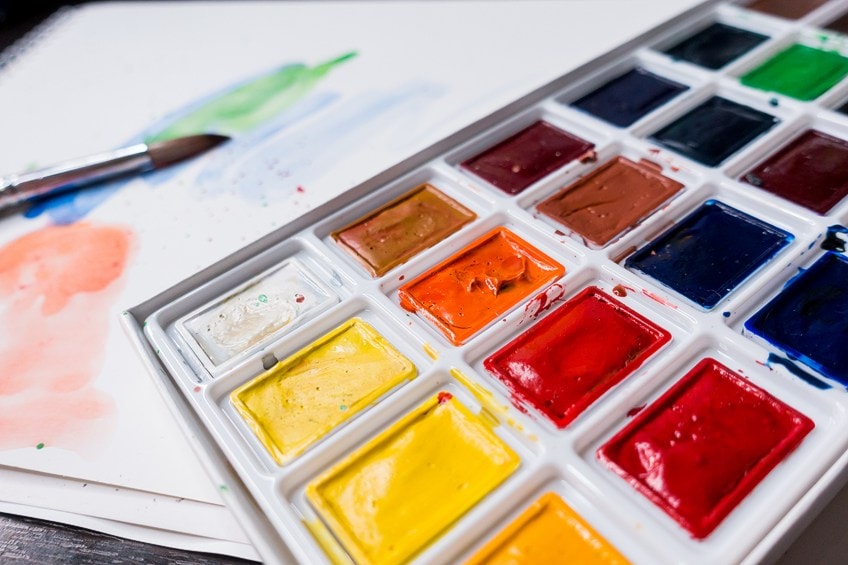
Although artists have been using paint that is soluble in water since the 15th century, gouache is a French word that was coined toward the end of the 18th century. It refers to water-based paints to which white was added to increase opacity. These days, other additives are also used to make the paint opaquer, and which thickens the paint.
Being a water-based paint, gouache is soluble in water. This makes using this paint a double-edged sword.
An advantage of the fact that it is water-based is that you can use water to make the paint thinner and more transparent. It also means that you can reactivate your paint once it has dried. On the other hand, it is not waterproof, which means that your first few coats of paint are subject to being watered down when you add water or paint over them with another layer of paint, which could create unexpected effects in your painting.
With this paint, you also have the choice of not adding water which will leave the consistency thicker. The thicker nature of this paint allows artists to layer their paint, which is especially useful if you make mistakes. For these reasons, gouache is fast becoming a popular alternative to watercolors as an appropriate paint for first-time use by beginners.
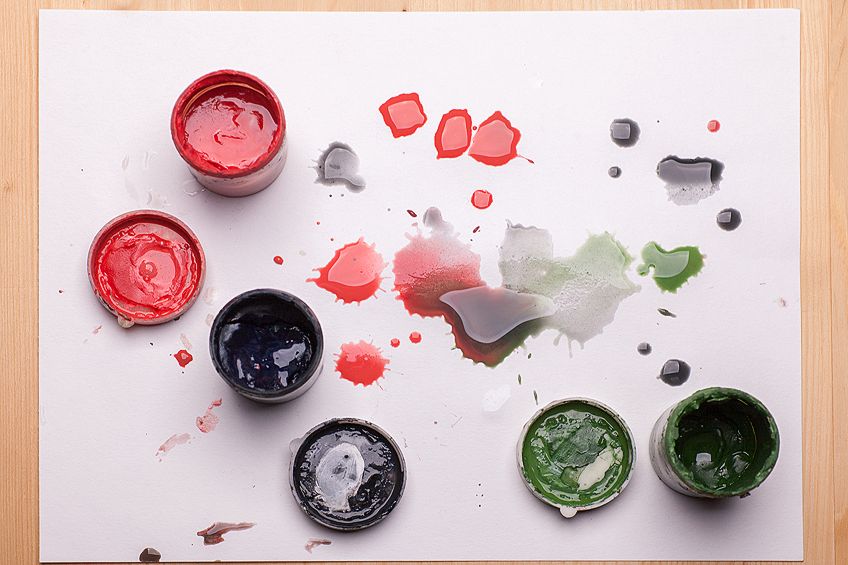
Advantages And Disadvantages of Gouache Paint
Gouache paint is favored among many beginners and professionals because of its versatility. You can read about the numerous advantages and disadvantages of using this paint below. For many, the pros to using this paint outweigh the cons by far.
[su_shadow style=”simple”][su_panel]PROS
- Can be used to create an opaque and/or transparent finish
- Easy to use
- Suitable for beginners as it allows for layering and correction of mistakes
- Can be used with other media (e.g. charcoal)
- Can be used on different background colors
CONS
- Quality of paint differs from brand to brand
- Prone to cracking if it is not applied properly
- Mastering the techniques requires experience
Choosing the Best Gouache Paint
Not all gouaches are created equal. Some are so thin that you would not be misguided in thinking that you are painting with watercolor paint. Doing a bit of homework beforehand can go a long way in helping you make sure you get paint that gives you exactly what you want in terms of opacity. There are a few questions you should be asking yourself when you look online for your paint or walk into your local art store.
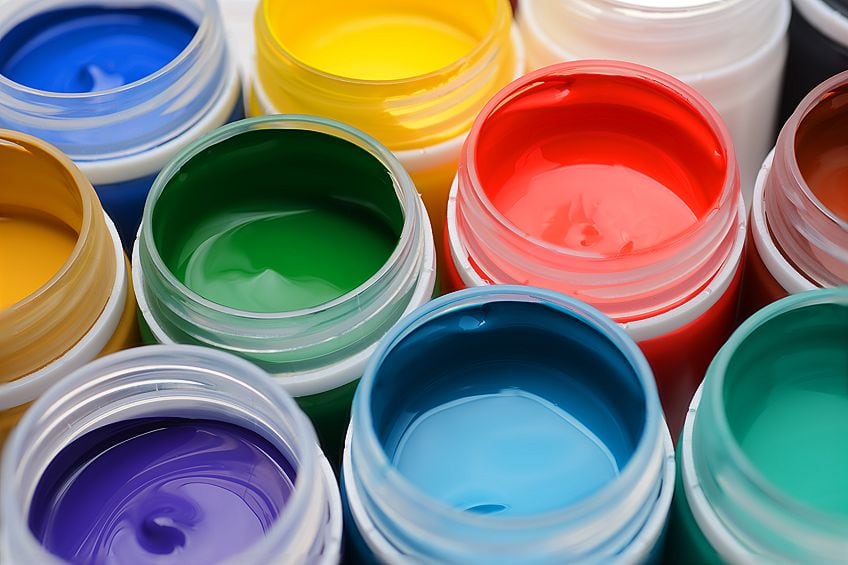
The first question you should bear in mind is “what is the quality and quality of the paint?”. Like most types of paint, gouache paints are available in different-sized tubes, such as 20ml or 24ml. Some paints are thin, inconsistent, or grainy while others are thick and creamy.
Secondly, think about accessibility in terms of the way the paint is packaged. Gouache paint is most often packaged in pans of different colors or individual colors. Some people prefer tubes because the individual colors can be replaced more easily than if they were in a pan. On the other hand, some tubes do not allow for easy squeezing.
You should also take into consideration the drying time when you are buying your paint.
Although gouache paints take much less time than oil paints to dry, the drying time of gouache paints varies from brand to brand, some of them drying within a matter of seconds. It goes without saying that the spectrum of colors that are available should also be considered. Whether you choose watercolor, oil, acrylic, or gouache, the palette is very important.

As a final note, gouache paint comes in three different grades that vary in quality and are suited to artists with varying degrees of experience. Artist-grade paint is the highest quality and most expensive option. They are lightfast (not prone to much fading), high quality, and generally have vibrant colors (this depends on the brand).
Designer gouache is the next best thing, with mid-range pricing and slightly poorer quality than artist-grade paint. Student gouache is for those starting out as it is more affordable because it has more filler and less pigment, which means that the quality is not as good as the other grades of paint mentioned here.
Choosing the Right Paper and Brushes for Gouache Paint
Because watercolor and gouache are similar in the sense that they are both water-based paints, you can use the same paper for gouache paint that you would use for watercolors. As far as paper goes, watercolor paper is the best choice because it is absorbent and does not warp as much as other paper. Unlike watercolors, gouache can be used on canvas, but this should only be done if you do not have the option of watercolor paper.
You can also use mixed media paper for these paints.
The same principle applies to brushes: whatever brush you use for watercolor paints can be used for gouache. You can work with brushes that have synthetic or natural bristles. You do not necessarily have to use a brush to apply gouache to the surface you are using – other tools such as sponges or a toothbrush can create different effects.
Our Recommendations for the Best Gouache Paint
Art and craft like painting is a booming industry that has become quite competitive, so you will find many brands in stores and online. Because you may not be able to test the products yourself (especially if you are shopping online), you should do some research to determine the best gouache paint set so that you do not waste money.
We have compared different brand names and found what we think are the best three gouache brands. Below you can find our review of Winsor and Newton, our verdict on Holbein, and our Reeves gouache review.
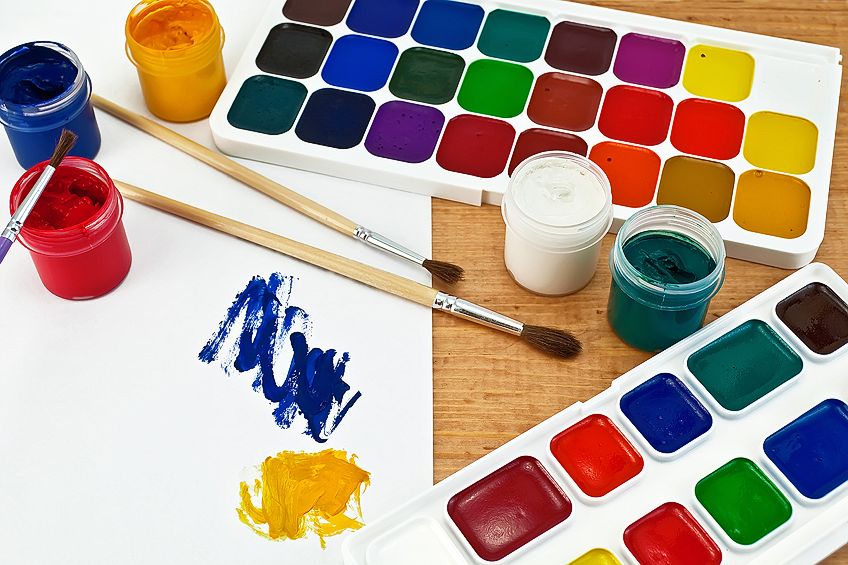
Budget-friendly: WINSOR & NEWTON Designers’ Gouache Paint Set
Winsor & Newton is one of the more popular brands not only because the quality of the paint is top-notch, but also because it is more affordable than many of the other brands that have a reputation for providing high-quality products.
Although you will find many cheaper brands than this one, the more cost-effective ones usually lack in quality and your work will come off second best no matter how experienced you are in using gouache paint. This brand of paint ticks the boxes for creaminess and consistency in the way that the paint has been mixed, so you will not be left feeling high and dry in terms of quality.
- Opaque watercolors with great color brilliance and matte finish
- Introductory set of 6 primary colors ideal for designers
- Create vibrant art in solid color or use as an opaque watercolor
Other brands that equal Winsor & Newton gouache quality are few and far between. Benefits of this brand that offer this basic set of six, include vibrancy of color, and the opacity of the paint, once it has been applied to your paper, is second-to-none, making it a dream to photograph as reflection is minimized. Coverage is great and the paint is relatively quick-drying, making layering easier than it is with paints that take longer to dry.
When compared to this vast array of benefits, the disadvantages of this gouache paint set are minimal. The main drawbacks of this brand are that the paints are slightly odorous and there are a limited number of colors available.
[su_shadow style=”simple”][su_panel]All in all, this brand is well worth its price. You can buy them in sets or individually.
PROS
- Affordable
- Bright colors
- Good opacity
- Great coverage
- Fast-drying
- Lightfast
CONS
- Odorous
- Limited color selection
Best Overall: HOLBEIN Artist Gouache Set
Holbein is another top player in the realms of cheap, high-quality paint. Although the tubes in this set of 18 seem impractically small (each tube is 5ml), the paint goes a long way thanks to the fact that you can mix them with water without compromising their opacity. The thick nature of these paints has the added advantage of doing away with the need for painting multiple layers of paint, which also makes the small quantity of paint in these tubes go even further than the same amount of paint would go if it belonged to another brand with thinner paint.
- Rich and vibrant opaque watercolor
- Blend smoothly with excellent coverage
- A small amount goes a long way
PROS
- Excellent quality paint
- Retains great opacity after diluting with water
- Good coverage
CONS
- Small tubes of paint
Tips for Using Gouache Paint
Gouache is one of the most versatile types of paint you can buy because it can be reactivated with water. It can have a matte, opaque finish that resembles acrylic or oil while at the same time allowing you to create an effect that has the more transparent qualities of watercolor. Making the most of this paint requires buying the right paint in the first place, and then learning the tricks that can help you to master this medium.

Buying Gouache
Acrylic gouache is not the same as gouache. As the name suggests, acrylic gouache is mixed with acrylic paint. Although acrylics are also water-based, they contain synthetic additives that make them impermeable to water which means that they cannot be reactivated once they are dry.
Another thing to remember when buying gouache (or any paint for that matter) is that you should not be fooled into thinking that the quality and standard of different grades of paint (i.e. student, professional, or artist grade paint) is consistent among different brands.
Your best bet is to test the same grade of paint in each brand to compare quality and determine which brand you prefer.
Techniques
As you have already gathered by now, gouache paint is unique in its ability to provide both an opaque finish and a watercolor effect. Making the most of the capacity to do this requires mastering a few techniques.
Glazing
Thanks to the fact that this paint can be thinned with water, you can use thinner paint to wash over previously painted sections of your work to create darker and different colors (depending on if you are using the same color or not). You can achieve this effect by slowly adding water to the color you want to paint and then painting over an area of dried paint.
Reactivating Dried Paint
Because gouache is a water-based paint, it dries quickly – but this does not mean that your painting cannot be altered once the paint is dry. On the contrary, the great thing about having water as a base is that you can reactivate the paint once it has dried by simply wetting your brush and making painting motions on the edges of previously dried paint.
Using a Dry Brush
Applying a small amount of paint to your brush and removing it by sliding your brush across the surface of paper or your palette before wiping it across paint that has already dried can help you to create texture and color contrasts in your artwork. It does this by rubbing off some of the previously applied paint.
Mixing Colors
When it comes to color, your options are by no means limited to the gouache palette you buy. Mixing is an inescapable part of the painting process if you want to create seamless shading from one color to another and interesting colors. Various techniques can be used for mixing color, one of which is to paint each of the two colors you want to use separately, leaving a small gap in between. Then paint a little of the other color over the original layer and keep blending in the space until the space is fully covered.

Creating a Watercolor Effect
In addition to creating a matte and opaque effect that looks like acrylics (though without the shininess), gouache paint can also easily be converted into an artwork that resembles watercolor. All you have to do to achieve this transparency and consistency of the paint is to add water to your gouache paint and apply it in the same way you would watercolors, which works especially well if you are painting on damp paper.
Creating Form
You can use the same color and white to create more volume and depth in objects in your painting. Mixing equal parts of your chosen color and white is a good way to create the base color you will be working with. The next thing to do is to add white or the color you have chosen to the base color that you have mixed.
This principle can be applied to any oil and acrylic paint as well.
Painting on Wet or Dry Paper
Because gouache is water-based, you can use your paint on dry paper or wet paper – each surface will create a different effect. If you want more control over your paint and sharper edges, use dry paper. Paper that has been dampened creates softer edges that add a more flowing appearance.
Other Tips and Tricks
While the above techniques can help you bring out the amazing potential this paint has to offer, here are a few basic tips you may want to remember that can help make your experience with gouache more enjoyable.

Do Not Make Your Paint Too Thick
As much as gouache makes it possible for you to layer and correct mistakes, painting too many layers can cause cracking as well as the creation of “mud” – which many an unsuspecting artist has seen emerge despite their best efforts, as a result of different colors mixing to produce an unexpected and unwanted brown color. You can avoid this by ensuring that the consistency of your paint is not too thick.
Clean Your Brush Often
Another tip is to make it a habit to regularly clean your brushes throughout the painting process because once these paints dry on a brush, they can be tricky to remove. This is why you should avoid letting the paint dry on the brush before cleaning it. Paint can be removed with water or soapy water.
Start With Thin Paint
Our final recommendation is, if you plan on creating layers of paint on your piece of art, make the bottom layers thinner than the top layers by adding more water to your paint. Because the earlier layers will be reactivated when you apply the later layers of paint, watery layers will have less pigment in them so there will therefore be less risk of cracking or the paint turning into mud when you create the later layers.
It is no wonder that gouache paint is growing in popularity both as a beginner’s paint and as a medium that is also suitable for the more experienced painter. Its versatility promises an interesting finish if the artists are willing to explore the different brands to choose the best paint for their needs and to experiment with the vast range of techniques that can be employed to create depth and dynamism in your painting.
Frequently Asked Questions
Is Gouache Good for Beginners?
Gouache is a great paint for beginners as it is one of the easiest types of paint to use. Like watercolors, which are also often used by people starting to paint for the first time, it is water-based. However, gouache paints are often considered an easier medium for beginners to start with because it contains more pigment than watercolors which makes it less transparent than the latter if (provided you do not add water to it). It is, therefore, easier to correct mistakes, as you can apply layers of paint to hide errors.
Is Gouache Easier Than Watercolor?
Most people agree that gouache is much easier to use than watercolor paint largely because of its opacity. Having less pigment than gouache paint, watercolors dry transparent so it is not easy to correct mistakes. In contrast, gouache paint has relatively more pigment in the paint, making it easier to form layers and paint over any mistakes you might have made.
What Is Gouache Paint?
Gouache is a water-based paint that has more opacity than watercolors. It is commonly the paint-of-choice for beginners because it is relatively easier to use than watercolors. Being water-based, it can be diluted with water to create a watercolor effect. Gouache paint is not waterproof.
What Is the Difference Between Watercolor and Gouache?
While both watercolor and gouache paints are water-based paints, they have a few differences, the most significant being the fact that gouache contains more pigment than watercolor paint. This affects the opacity of the paint – gouache has more of a solid, matte finish than the more transparent effect of watercolor. Gouache is more versatile than watercolors because you can use undiluted paint to create an opaque finish and you can add water to create a more transparent effect with the paint.
Is Gouache Paint the Same As Acrylic?
Although water is used to dilute both of these types of paint, acrylics contain artificial resins such as plastics that result in a shinier finish that is waterproof. Acrylic paints have a slower drying time than gouache and have a glossier, less opaque look when dry.
In 2005, Charlene completed her Wellness Diplomas in Therapeutic Aromatherapy and Reflexology from the International School of Reflexology and Meridian Therapy. She worked for a company offering corporate wellness programs for a couple of years, before opening up her own therapy practice. It was in 2015 that a friend, who was a digital marketer, asked her to join her company as a content creator, and this is where she found her excitement for writing.
Since joining the content writing world, she has gained a lot of experience over the years writing on a diverse selection of topics, from beauty, health, wellness, travel, and more. Due to various circumstances, she had to close her therapy practice and is now a full-time freelance writer. Being a creative person, she could not pass up the opportunity to contribute to the Art in Context team, where is was in her element, writing about a variety of art and craft topics. Contributing articles for over three years now, her knowledge in this area has grown, and she has gotten to explore her creativity and improve her research and writing skills.
Charlene Lewis has been working for artincontext.org since the relaunch in 2020. She is an experienced writer and mainly focuses on the topics of color theory, painting and drawing.
Learn more about Charlene Lewis and the Art in Context Team.






